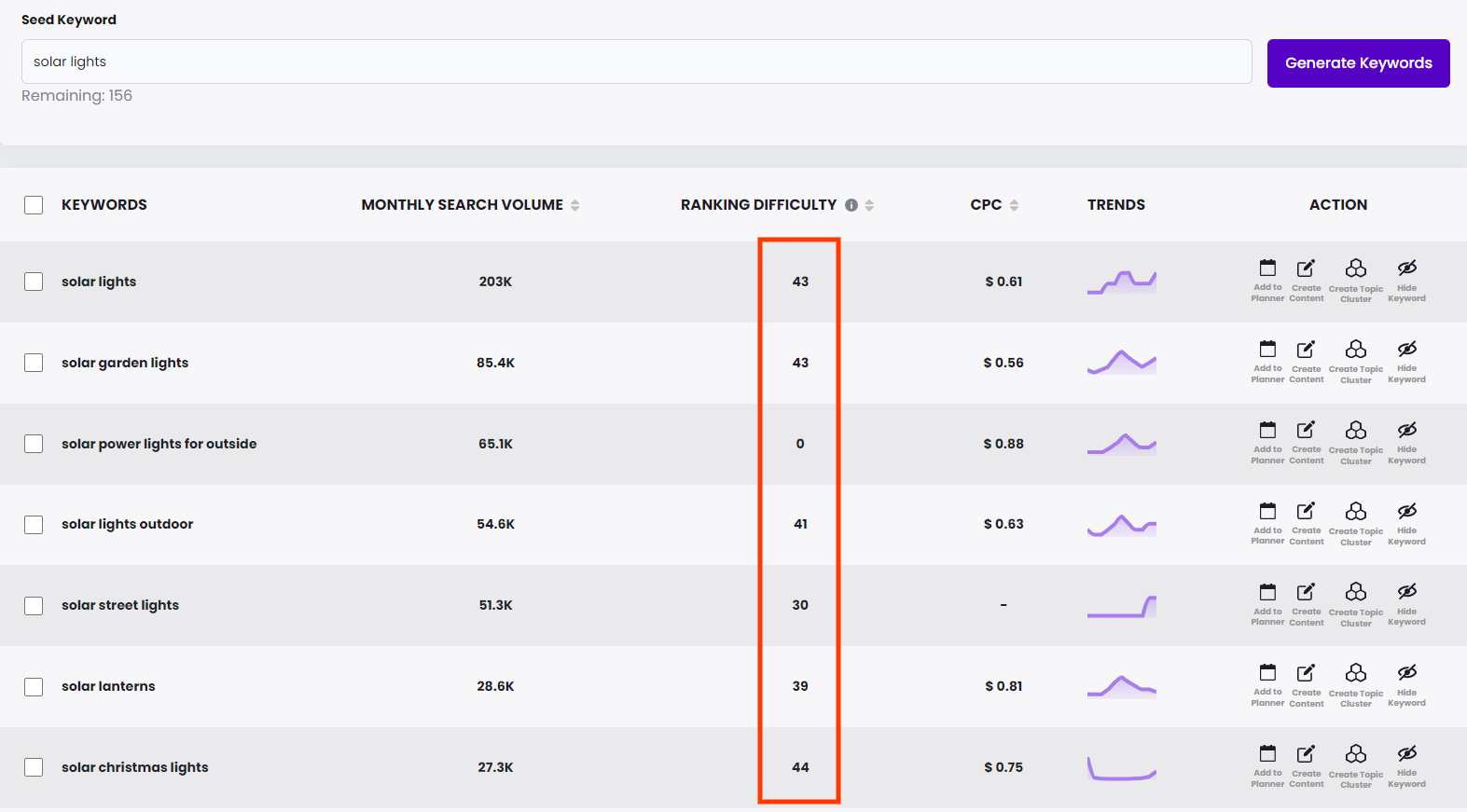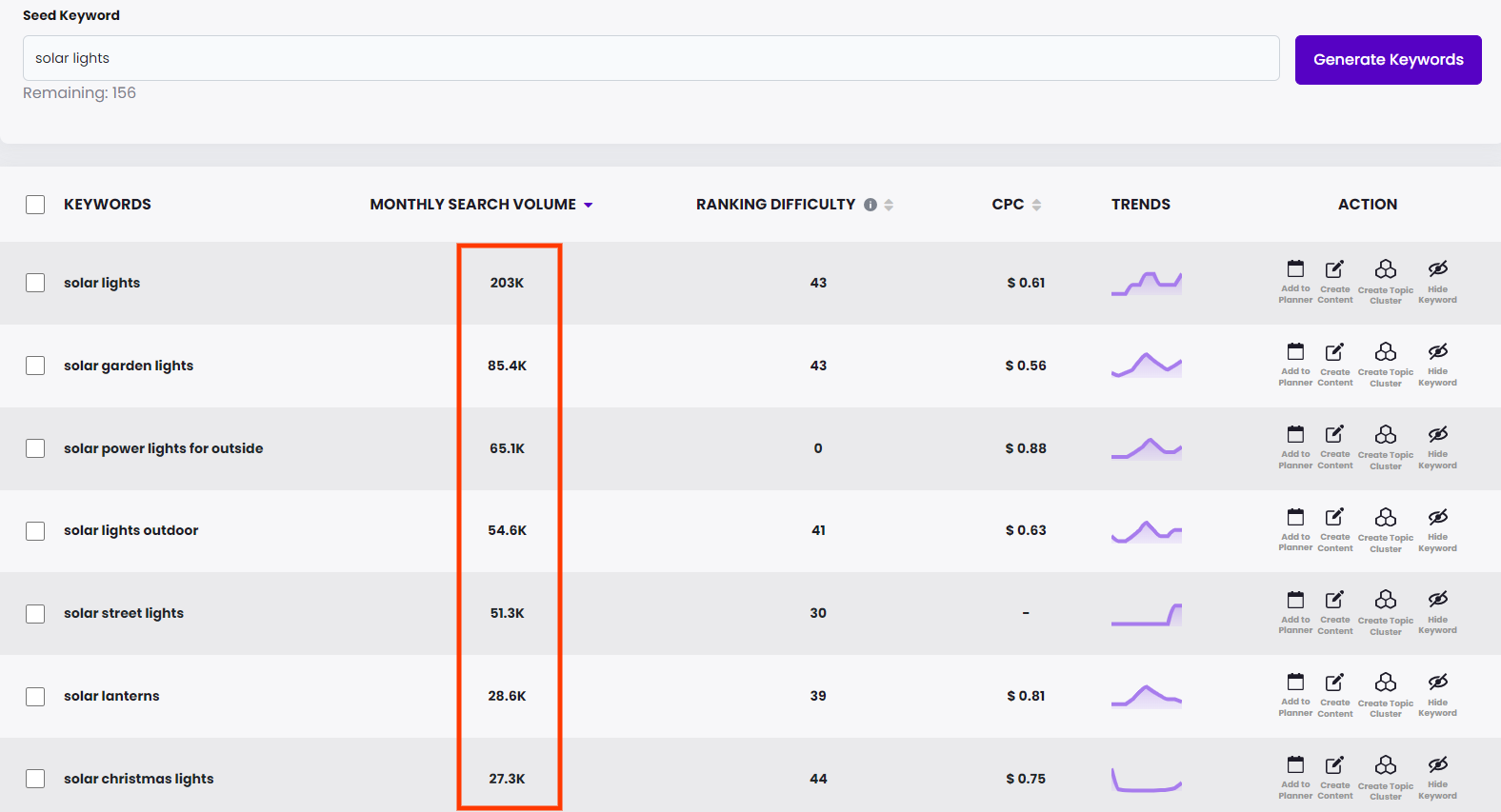Discover top guides, trends, tips and expertise from AIO Writers
How to Find Low Hanging Fruit Keywords and Win Them
Julia McCoy
Monday, 10th Jun 2024
While the competition for high-traffic keywords is fierce, there’s a treasure trove of opportunities waiting in the form of “low-hanging fruit” keywords.
These are keywords that may not have sky-high search volumes but are relatively easy to rank for and can drive highly targeted traffic to your site.
In this blog post, we’ll explore how to find low-hanging fruit keywords and capitalize on them for quick wins.
Let’s get started.
Table Of Contents:
- What are Low-Hanging Fruit Keywords?
- How to Find Low-Hanging Fruit Keywords
- Find Low-Hanging Fruit Keywords on Google Search Console
- FAQs: How to Find Low-Hanging Fruit Keywords
- Conclusion
What are Low-Hanging Fruit Keywords?
Low-hanging fruit keywords are search terms that offer a relatively easy opportunity to rank highly in search engine results pages (SERPs). Keywords are considered “low-hanging fruit” if they are:
- Less competitive
- Highly relevant
- Have moderate search volume
- Specific
- Presents ranking potential
Low-hanging fruit keywords have low competition, meaning that relatively few websites or pages are targeting these keywords. They often have a low keyword difficulty score — ideally 40 or below — which provides a significant advantage as it allows for higher rankings without the need for extensive link-building.

Low-hanging fruit keywords are also highly relevant to your business, products, or services. For instance, if you’re selling organic skincare products, look for keywords like “organic facial cream” rather than more general terms like “lotions”. This high relevance attracts a more targeted audience, increasing the likelihood of conversions.
Another important characteristic of a low-hanging fruit keyword is they have moderate to high search volume. They are searched often enough to drive significant traffic but not so frequently that they become highly competitive.

Specificity is also crucial. Low-hanging fruit keywords are often long-tail keywords, which are longer and more specific phrases. These keywords include specific details, such as “best organic skincare for dry skin” or “cruelty-free facial cream for oily skin”. Long-tail keywords typically have lower competition and higher conversion rates due to their specific nature.
Finally, low-hanging fruit keywords have current ranking potential. Your website might already be ranking on the second or third page of search results for these terms. With a little optimization effort, you could move these keywords to the first page without having to start from scratch with new keywords.
How to Find Low-Hanging Fruit Keywords
To find low-hanging fruit keywords, you will need a keyword research tool. Some of the popular ones are Ahrefs, Semrush, Ubersuggest, BrandWell, and the good ‘ol Google Keyword Planner.
Start With a Seed Keyword
Start by identifying your seed keywords — the broad, high-level topics relevant to your business.
For example, if you run an online pet store, your seed keywords might be things like “dog food,” “cat toys,” or “pet supplies.”
Once you have a list of seed keywords, you can use them as a starting point to discover more specific, low-competition keyword opportunities.
Choose Low Keyword Difficulty, High Search Volume
When evaluating potential low-hanging fruit keywords, look for terms that have a relatively low keyword difficulty score but a decent search volume.
Keyword difficulty is a metric used by many keyword research tools to estimate how hard it would be to rank for a particular keyword based on the strength of the current top-ranking pages.
Generally, keywords with a difficulty score of 40 or less are considered low-hanging fruit.
At the same time, you’ll want to make sure the keyword has enough search volume to be worth targeting. Aim for at least 100 to 1,000 monthly searches.
Aim For Keywords with SERP Features
Another way to identify low-hanging fruit keyword opportunities is to look for terms that trigger SERP features like featured snippets, video results, and “People Also Ask” boxes.
These features can help you capture more Page One real estate and drive additional organic traffic, even if your page doesn’t rank in the top three positions.
To find keywords with SERP features, do a manual search for your target keyword and see what features show up, or use a keyword research tool to filter for terms that have a high probability of triggering certain features.

Find Low-Hanging Fruit Keywords on Google Search Console
Google Search Console is another underrated source for low-hanging fruit keywords. By digging into your site’s performance data, you can uncover keyword opportunities for boosting your rankings with a bit of optimization.
To find low-hanging fruit keywords on Google Search Console, follow these steps:
- Go to the “Performance” report and set the date range to the last 3-6 months.
- Look for keywords that are driving impressions but have a relatively low click-through rate (CTR). With a little tweak to your title tags and meta descriptions, you could optimize these pieces to attract more clicks.
- Look for keywords where your average position is between 5-20. Again, by refining a few on-page elements, you may be able to move these keywords onto the first page and drive more traffic.
- Use the “Queries” report to see which specific keywords are driving impressions and clicks to your site. Look for relevant, high-volume keywords that you’re not directly targeting in your content and consider creating new pages to rank for those terms.
Create Content for Low-Hanging Fruit Keywords
Now that you’ve pinpointed some juicy low-hanging fruit keywords, it’s time to craft content that’ll soar to the top of search engine rankings.
Make sure your content is top-notch, in-depth, and truly helps searchers – that’s the key to success.
Zero in on the top-ranking pages for your target keyword and try to outdo them with an even more comprehensive blog post.
One of the most important things to consider when creating content is to identify the intent behind the search.
What is the user looking for when they type in that keyword? Are they searching for information about a particular topic, looking for a specific website, or ready to buy a product?
When you understand the purpose behind their search, you can craft content that genuinely speaks to your target audience.
For example, let’s say you’re a fitness coach looking to attract new clients. A keyword like “best workout routines” might seem like a great low-hanging fruit opportunity at first glance.
But if you dig a little deeper, you might find that most of the people searching for that term are actually looking for free workout plans they can do at home — not necessarily looking to hire a coach.
On the other hand, a keyword like “online fitness coaching” or “personal trainer near me” is much more likely to be used by someone interested in your services.
“The key to finding low-hanging fruit keywords is to look for that sweet spot where search volume is high enough to be worth your while, but competition is low enough that you actually stand a chance of ranking.”
– John Smith, SEO Expert
Optimizing Your Website for Low-Hanging Fruit Keywords
Once you’ve identified keyword opportunities, include them in strategic places like titles, headers, meta descriptions, and throughout the content.
For example, you could update a blog post about skincare routines to include the keyword “organic night cream for dry skin.”
Optimize each page for your target keywords by adding them to your link anchors, alt text for images, and URLs.
For instance, consider creating internal links from other relevant pages to the page targeting “organic night cream.”
Building backlinks from authoritative websites through guest posting or influencer partnerships can boost your website’s authority.
Why not write a guest post for a health blog that links back to your “organic night cream” page?
By implementing these strategies, you can effectively target low-hanging fruit keywords to improve your SERP ranking and attract more targeted traffic.
FAQs: How to Find Low-Hanging Fruit Keywords
How to find low-hanging keywords?
Start with seed keywords and use keyword tools. Look for high search volume but low competition. Google Search Console helps too.
What is a low-hanging fruit keyword?
A low-hanging fruit keyword has a high search volume and low difficulty score, making it easier to rank on search engines.
How to identify low-competition keywords?
You can identify them using SEO tools that analyze competition levels. Aim for long-tail keywords with a low ranking difficulty.
Conclusion
Targeting low-hanging fruit keywords is an effective strategy to quickly improve search engine rankings and drive relevant traffic to your site.
You can find them by using keyword research tools, analyzing competitors, creating content around search intent, and optimizing on-page elements.
Start digging into Google Search Console to unearth these low-competition, highly relevant, long-tail keywords for quick wins!

UNLOCK YOUR POTENTIAL
Long Headline that highlights Value Proposition of Lead Magnet
Grab a front row seat to our video masterclasses, interviews, case studies, tutorials, and guides.



